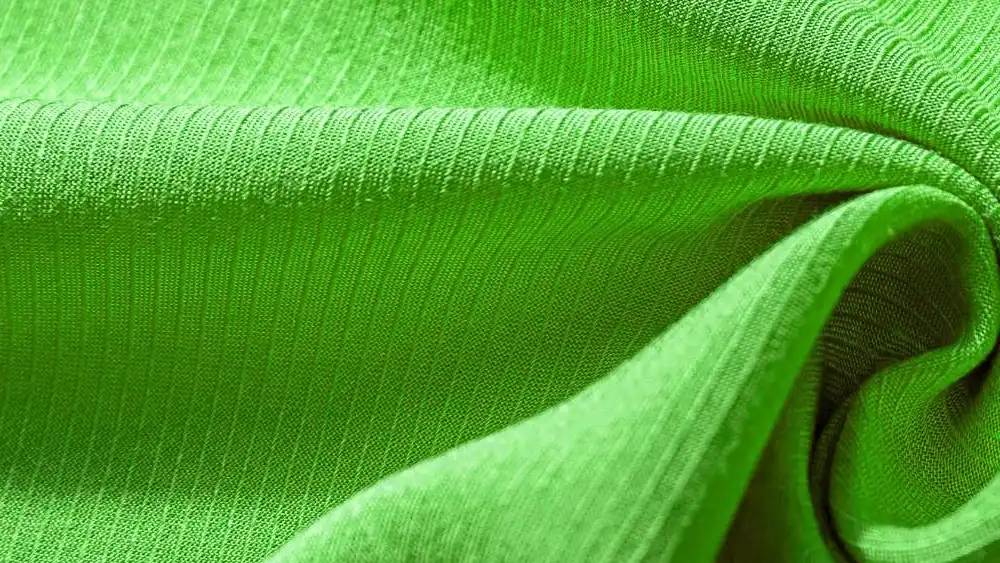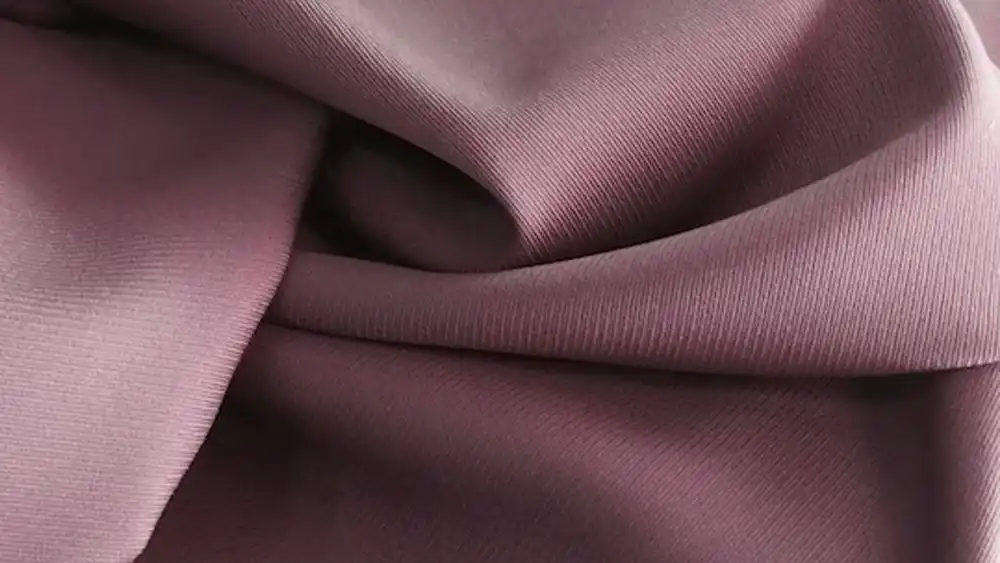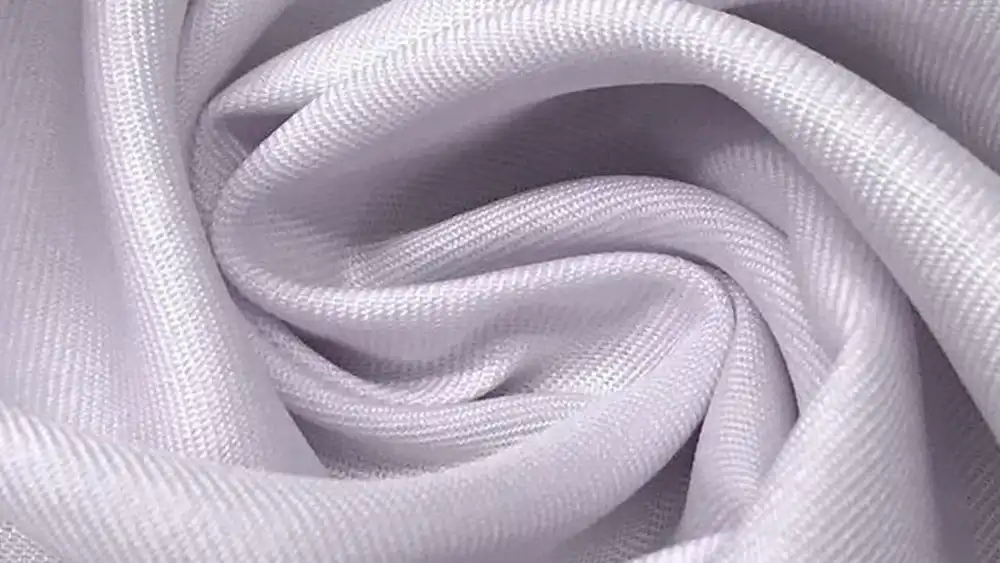Twill fabric, with its unique weave pattern, has been a staple in the textile industry for centuries. Renowned for its durability, comfort, and aesthetic appeal, twill fabric finds applications in a wide range of products, from clothing to upholstery.
In this comprehensive guide, we explore the various types of twill fabric, shedding light on their distinct characteristics, uses, and benefits.
What Is Twill Fabric?

Twill fabric is a type of textile characterized by its unique weaving pattern, known as the twill weave. In twill fabric, the weft (horizontal) yarns pass over and under multiple warp (vertical) yarns in a regular pattern, creating diagonal lines or ribs on the surface of the fabric. This diagonal pattern sets twill fabric apart from other types of weaves, such as plain weave or satin weave.
The diagonal lines or ribs formed by the twill weave give twill fabric a distinct appearance and texture. Depending on the specific twill weave used, the diagonal lines can vary in angle and density, resulting in different visual effects and levels of durability.
Twill fabric is valued for its durability, strength, and versatility. It is commonly used in a wide range of products, including clothing, upholstery, and accessories. Twill fabric can be made from various fibers, including cotton, wool, polyester, silk, and linen, each offering unique characteristics and properties.
Characteristics of Twill Fabric
What Makes Twill Fabric Stand Out?
Twill fabric distinguishes itself with its diagonal weave pattern, which sets it apart from other textile weaves. This distinct pattern is achieved by passing the weft thread over one or more warp threads, creating a diagonal ribbing effect. This characteristic gives twill fabric its unique appearance and texture, making it highly sought after in the fashion and design industries.
Durability and Longevity
One of the standout features of twill fabric is its exceptional durability. The diagonal weave structure lends strength to the fabric, making it resistant to tearing and fraying. As a result, garments and products made from twill fabric are known for their longevity, standing the test of time even with frequent use and washing.
Softness and Comfort
Despite its robust nature, twill fabric is surprisingly soft and comfortable to wear. The weave pattern allows the fabric to drape gracefully, conforming to the body’s contours for a flattering fit. This combination of durability and comfort makes twill fabric an ideal choice for everyday clothing items, such as jeans, trousers, and jackets.
Versatility in Design and Color
Twill fabric offers endless possibilities in terms of design and color. Its tight weave structure provides a smooth canvas for printing, dyeing, and embellishment, allowing designers to unleash their creativity. Whether it’s vibrant hues, intricate patterns, or subtle textures, twill fabric can be customized to suit any aesthetic preference, making it a favorite among fashion enthusiasts and interior decorators alike.
Types of Twill Fabric
Cotton Twill Fabric

Description: Cotton twill fabric is crafted from cotton fibers using a twill weave pattern, characterized by diagonal lines or ribs on the surface.
Characteristics:
- Breathability: Cotton twill is highly breathable, allowing air to circulate freely through the fabric. This makes it comfortable to wear, especially in warmer climates.
- Durability: Despite its softness, cotton twill is durable and resistant to wear and tear, making it suitable for everyday clothing items.
- Softness: It has a soft and comfortable feel against the skin, making it a popular choice for casual wear like jeans, chinos, and shirts.
- Versatility: Cotton twill fabric can be dyed in a wide range of colors and is often used for a variety of garments, from workwear to casual attire.
Wool Twill Fabric

Description: Wool twill fabric is made from wool fibers woven in a twill pattern, resulting in a dense and warm fabric with a smooth surface.
Characteristics:
- Insulation: Wool twill provides excellent insulation, retaining heat and keeping the wearer warm in cold weather conditions.
- Luxurious Texture: It has a luxurious texture with a soft handfeel, making it ideal for tailored garments like suits, blazers, and coats.
- Drape: Wool twill drapes beautifully, conforming to the body’s contours and creating elegant lines in garments.
- Resilience: Wool twill is naturally resilient and resistant to wrinkles, ensuring garments maintain their shape and appearance over time.
Polyester Twill Fabric

Description: Polyester twill fabric is made from synthetic polyester fibers woven in a twill pattern, resulting in a smooth and durable fabric.
Characteristics:
- Wrinkle Resistance: Polyester twill is highly resistant to wrinkles, making it ideal for clothing items that require minimal maintenance.
- Colorfastness: It has excellent color retention properties, retaining vibrant hues even after multiple washes and prolonged exposure to sunlight.
- Strength: Polyester twill is known for its strength and durability, making it suitable for workwear, uniforms, and outdoor apparel.
- Quick Drying: Polyester twill dries quickly, making it a practical choice for activewear and outerwear that may be exposed to moisture.
Silk Twill Fabric

Description: Silk twill fabric is woven from silk fibers using a twill weave pattern, resulting in a luxurious fabric with a subtle sheen.
Characteristics:
- Elegance: Silk twill exudes elegance and sophistication, making it a popular choice for formal attire and high-end fashion garments.
- Smooth Texture: It has a smooth and lustrous texture that feels luxurious against the skin, offering unparalleled comfort.
- Versatility: Silk twill is versatile and can be used for a variety of garments and accessories, including dresses, blouses, scarves, and ties.
- Drape: Silk twill fabric drapes beautifully, flowing gracefully with the body’s movements and creating a flattering silhouette.
- Breathability: Despite its luxurious appearance, silk twill is breathable and lightweight, making it suitable for year-round wear.
- Printability: Silk twill provides an excellent canvas for intricate prints and designs, allowing for endless creative possibilities in fashion and accessories.
Linen Twill Fabric

Description: Linen twill fabric is crafted from linen fibers using a twill weave pattern, resulting in a fabric with a distinctive texture and appearance.
Characteristics:
- Breathability: Linen twill is highly breathable and absorbent, making it ideal for warm weather clothing and home textiles.
- Texture: It has a natural, textured surface that adds visual interest to garments and lends a rustic charm to interiors.
- Strength: Despite its lightweight nature, linen twill is strong and durable, with fibers that become softer and more pliable with each wash.
- Cooling Effect: Linen twill has a natural cooling effect on the skin, making it a popular choice for summer clothing like shirts, trousers, and dresses.
Each type of twill fabric offers a unique blend of characteristics and benefits, catering to diverse preferences and needs in the world of fashion, apparel, and interior design. Whether you prioritize durability, comfort, elegance, or breathability, there’s a twill fabric to suit your requirements and elevate your wardrobe or living space.
FAQs
What is twill fabric?
Twill fabric is a type of textile characterized by its diagonal weave pattern, which sets it apart from other fabrics.
What are the advantages of twill fabric?
Twill fabric is known for its durability, softness, and versatility in design, making it suitable for a wide range of applications.
How is twill fabric used in clothing?
Twill fabric is commonly used in the production of jeans, trousers, jackets, and skirts due to its durability and comfort.
Is twill fabric suitable for upholstery?
Yes, twill fabric is often used in upholstery due to its durability and resistance to wear and tear.
Can twill fabric be dyed or printed?
Yes, twill fabric can be easily dyed or printed, allowing for endless customization options in terms of color and design.
Is twill fabric eco-friendly?
It depends on the type of fiber used. Natural fibers such as cotton, wool, and linen are biodegradable and environmentally friendly, whereas synthetic fibers such as polyester may have a larger environmental footprint.
Conclusion
In conclusion, twill fabric offers a winning combination of durability, comfort, and versatility, making it a top choice for clothing, upholstery, and home textiles. Whether you prefer the casual appeal of cotton twill or the luxurious feel of silk twill, there’s a type of twill fabric to suit every taste and preference. Explore the world of twill fabric and elevate your wardrobe and living spaces with this timeless textile.
